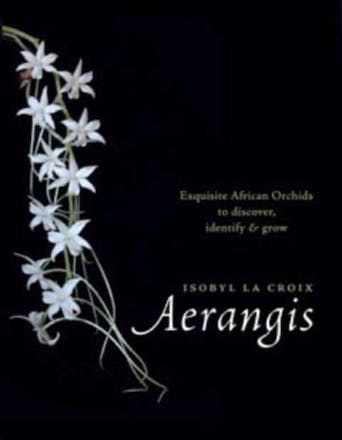Elegantly simple. That is how we would describe it. Coffee-table books often lack the substance that a serious orchid grower wants, while scientific journals tend to contain taxonomic complexity that can bore, confuse and quickly lose the average reader. Isobyl la Croix has bridged that gap beautifully. Except for its size, Aerangis appears to be the former. It is a lovely book; artfully produced, including a bound ribbon book mark with a plethora of photographs, excellent graphics and layout. Upon closer inspection, the reader will immediately recognize that Isobyl has consolidated potentially confusing taxonomic information into an understandable format that is clearly organized, well written and a delight to read! Isobyl dedicated this work to her friend and colleague Joyce Stewart. Joyce had presented a monograph of the African species of Aerangis in 1979, but until now, information about the complete genus has been scattered between publications and has been incomplete. This book covers the 58 currently recognized species along with natural and man-made hybrids.
The book includes maps indicating native habitats of each species. Its six chapters are clearly laid out and contain a history of the genus including information on recent DNA work which will certainly change the genus in the future. It describes and illustrates the morphology and distinguishing features of Aerangis. And so importantly, it includes keys for identification. Isobyl has included a key to the entire genus since, as she states, "growers often don’t know the origin (in nature) of their plants". There are also separate keys for the African species and the Madagascar/Comoros species.
The chapter on habitat, climate and distribution includes many excellent photographs of the plants growing in situ. Isobyl covers important points about threats and conservation, stating that in nature the two biggest challenges for this genus are over-collection and the destruction of habitat. She gives insight to current conservation efforts and ex-situ propagation. The book contains an excellent overview of the cultivation of this genus, then within the well-presented “Plant Directory” (chapter 5) there is, in many cases, specific cultural information for each species. Isobyl has seen many of these plants first-hand in nature and is also an excellent grower, so this information will prove invaluable to readers.
The Plant Directory chapter will certainly be the most well-used one in the book. Isobyl has made this directory very simple to follow without the need to check the index each time you wish to look for a particular species. The photographs and drawings are excellent and plentiful (though more is always better, there must be a limit). There is excellent and useful information provided for every species. As growers who desire to acquire the “complete” collection of Aerangis, it’s interesting to see that nine species are represented only by drawings and/or photos of herbarium specimens illustrating the rarity of these plants.
The hybrids using Aerangis are also represented; it is a small chapter as there are relatively few. These hybrids can serve as a meaningful introduction for many people becoming interested in this genus as they tend to be easier to cultivate. Finally, there is a glossary and appendices to introduce and reinforce knowledge of botanical terminology.
This elegant book serves as both a consolidated botanical reference and a thoughtful introduction to this most special genus within the orchid family.
— Brenda Oviatt and Bill Nerison, Botanica Ltd., billn@bresnan.net










